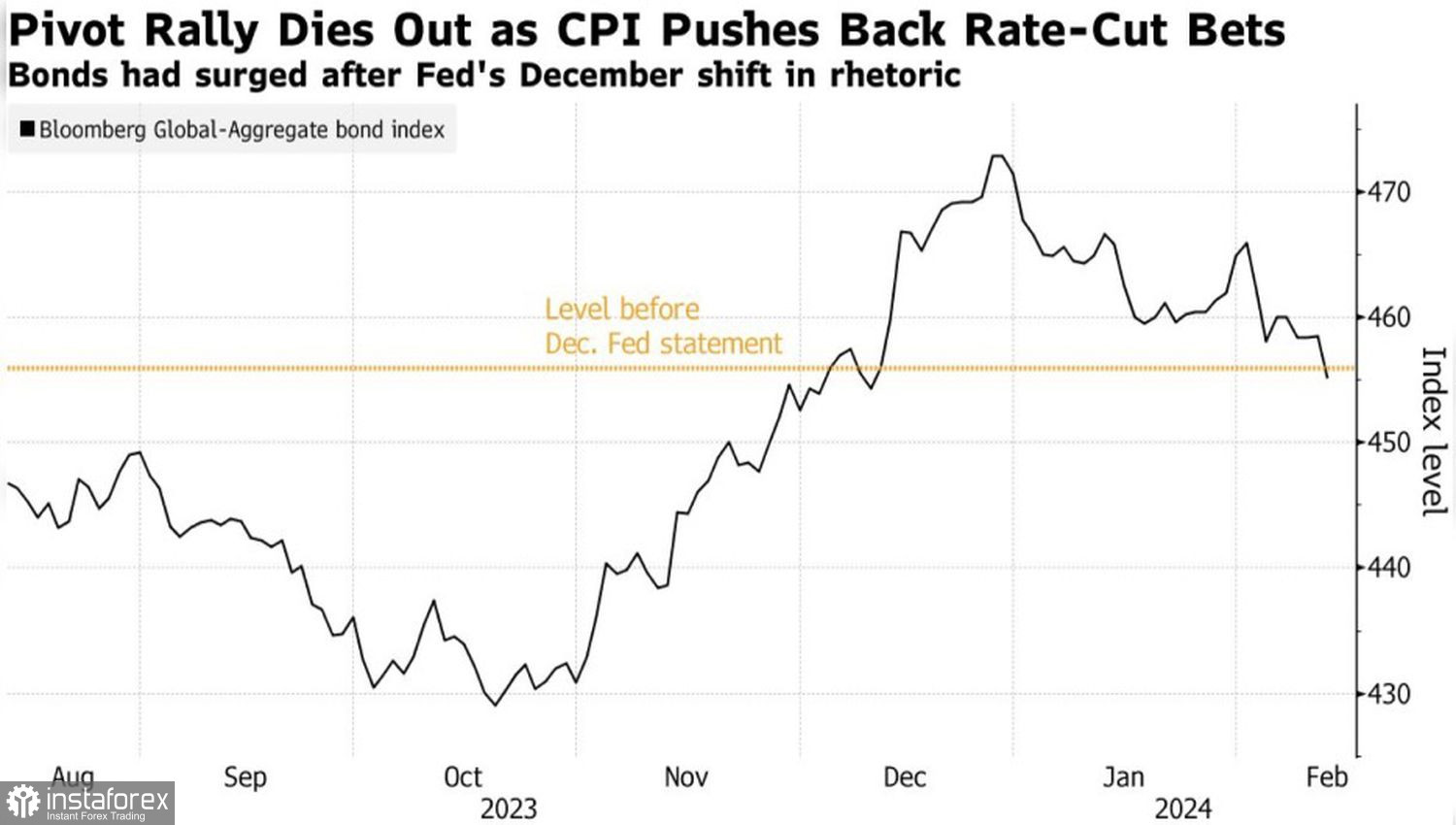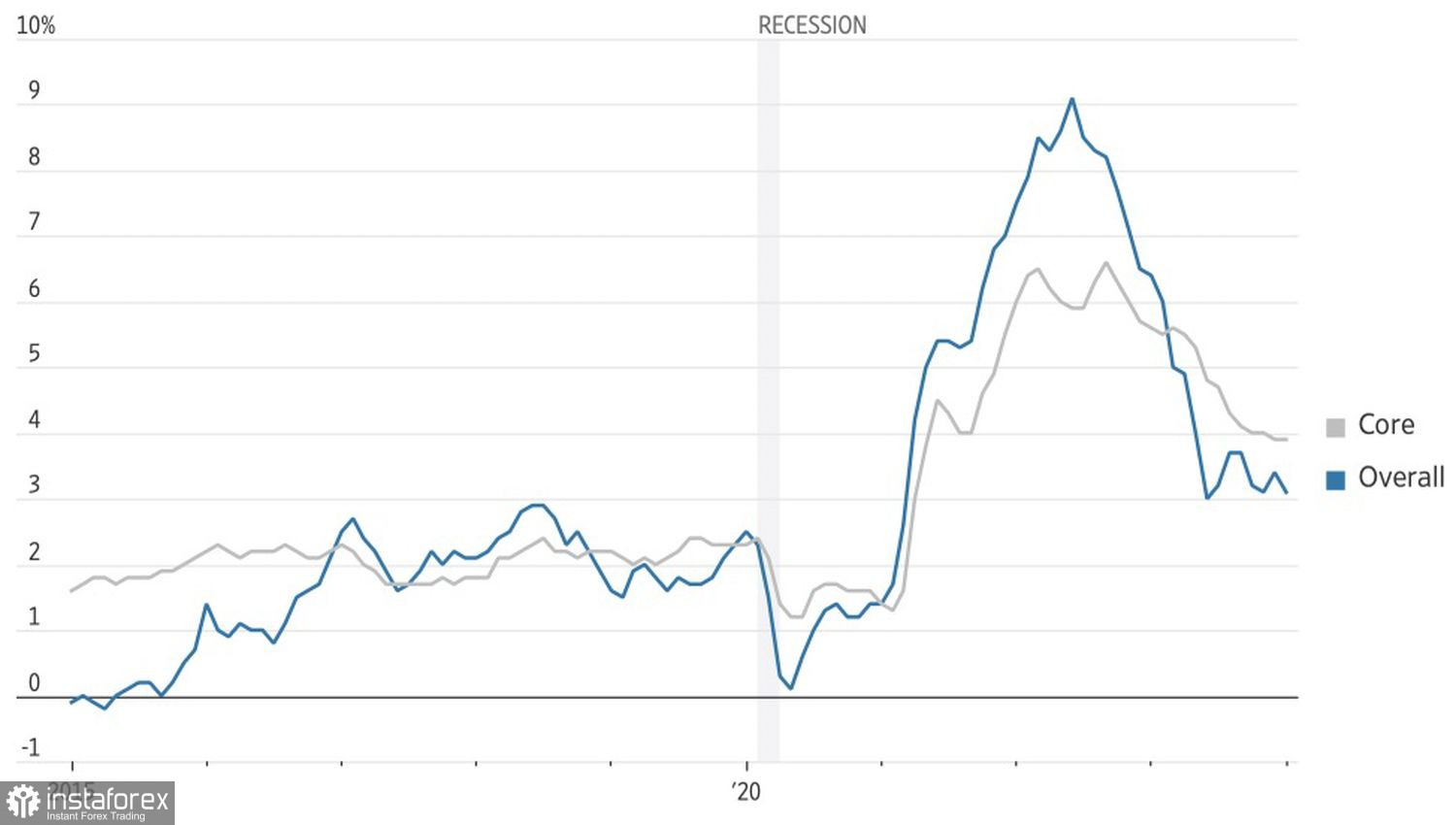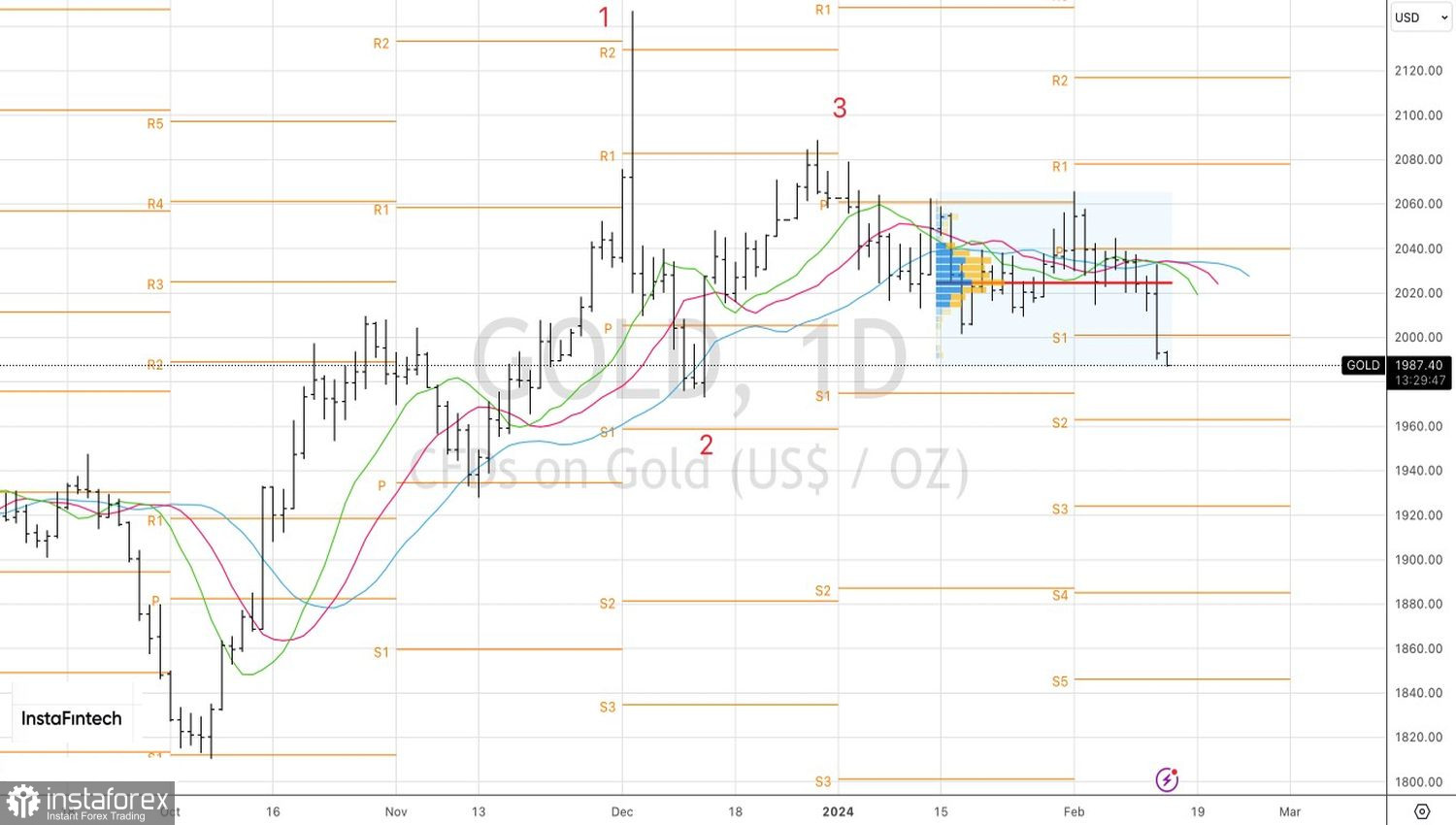The wind of change. Gold descended from the heavens to the earth due to concerns that the Federal Reserve might not transition to rate cuts in 2024. The chances of a swift initiation of the monetary policy easing process are diminishing too quickly, reducing its scale. If at the beginning of the year, the futures market expected 6 or 7 acts of monetary expansion to begin in March, after the release of U.S. inflation data for January, the expectations dropped to 4 or 5 acts starting in June. It's not surprising that the precious metal was forced to retreat from the battlefield.
In 2022–2023, gold faced a serious headwind as the Federal Reserve tightened its monetary policy by 525 basis points. However, XAU/USD bulls successfully withstood the challenge. The precious metal managed to grow by 13% last year, thanks to the Federal Reserve's dovish pivot in December. Buyers were seriously anticipating a change in the wind to favorable conditions, as monetary expansion leads to a decrease in Treasury bond yields and a weakening of the U.S. dollar. But it didn't happen.
In January–February, the U.S. economy pleasantly surprised with remarkable regularity. Key reports on the labor market and inflation presented good surprises to USD index enthusiasts. After a 5% dip in November–December, it grew by more than 3% since the beginning of 2024. Positive news raised yields not only for U.S. bonds but also for the global debt market. The global bond index fell by 3.5%, indicating rising interest rates.
Dynamics of the Global Bond Index

The price of gold is determined by the cost of money, so the higher the yield on U.S. debt, the stronger the U.S. dollar, and the lower the XAU/USD quotes. In this regard, the acceleration of consumer prices from 0.2% to 0.3%, core inflation from 0.3% to 0.4%, and service inflation from 0.4% to 0.7% MoM in January became a catalyst for the collapse of the precious metal below the psychologically significant $2,000 per ounce mark. This happened for the first time since mid-December.
In the annual calculation, CPI slowed to 3.1%, while core inflation remained at 3.9%. The indicators exceeded Bloomberg experts' forecasts, triggering panic in financial markets.
Dynamics of American Inflation

As a result, derivatives reduced the chances of the first Fed funds rate hike in May from 56% to 41%, and with a fifty-fifty probability, they expect 3 or 4 acts of Federal Reserve monetary expansion in 2024. These figures are close to the FOMC forecasts of three steps in the path of monetary policy easing. Fed officials' comments suggest that it will start in June.

Thus, the market has adopted the Fed's opinion, which increased Treasury bond yields and strengthened the U.S. dollar. In such an environment, gold feels out of place.
Technically, on the daily chart, the internal bar was clearly played after a false breakout. Entering shorts from $2,023 per ounce proved to be the right decision. It makes sense to maintain short positions on gold and periodically increase them on pullbacks. The target levels are $1,974 and $1,963.





















